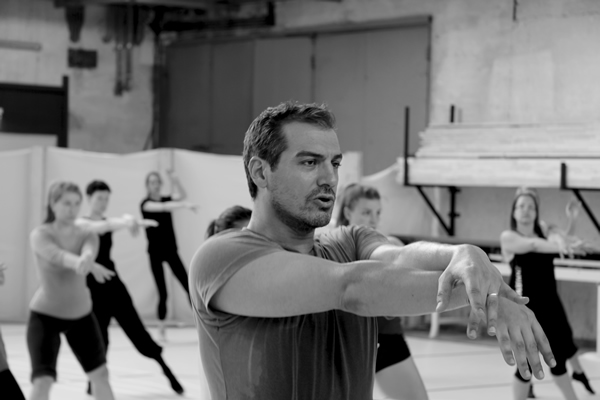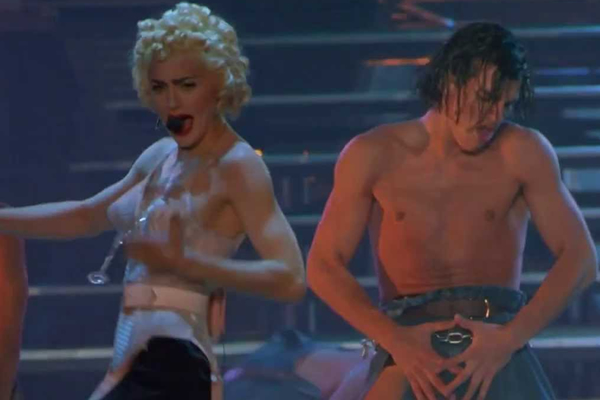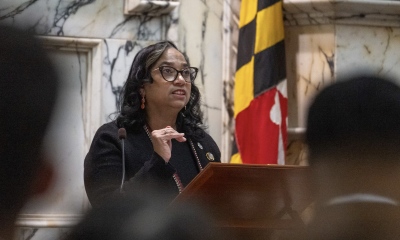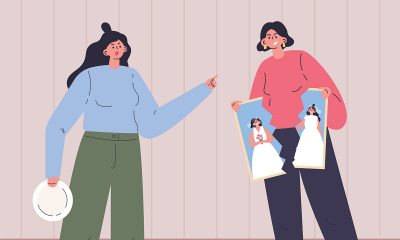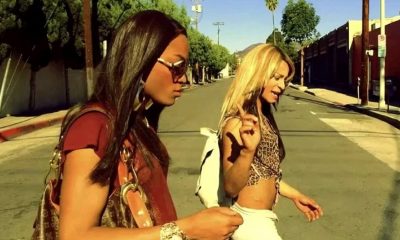a&e features
Former Madonna dancer Slam recalls ‘Blond Ambition Tour,’ ‘Truth or Dare’
Salim Gauwloos revisits landmark film on its 25th anniversary
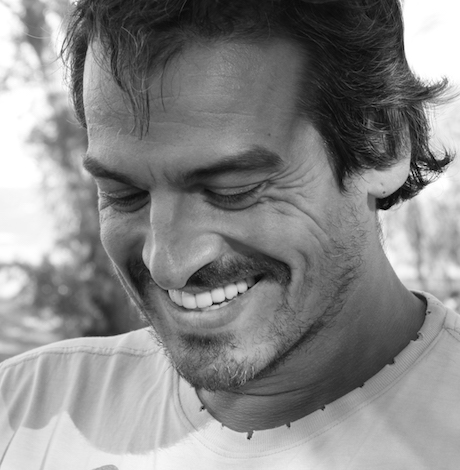
“Truth or Dare”
Monday, Sept. 12
9 p.m.
AFI Silver
$13
8633 Colesville Rd.
Silver Spring, Md.
“Madonna: Truth or Dare,” the landmark 1991 documentary (aka “In Bed With Madonna”) is widely remembered not only as an eye-popping memento of the singer’s legendary “Blond Ambition Tour,” but also as a gay cultural touchstone.
In some ways, it’s the gay equivalent of classic rockumentaries like “Gimme Shelter” or “The Last Waltz” but it’s more than that, too. Not only because it captures Our Lady at the peak of the zeitgeist, but also because its depiction of Madonna’s back-up dancers (of the seven, only Oliver Crumes was straight) being so matter-of-factly out that it felt almost otherworldly to the gay boys who lapped it up in Peoria and everywhere else.
In honor of its anniversary — it screens twice in the coming days at the AFI Silver — we caught up with Salim “Slam” Gauwloos, one of the “Blond Ambition” dancers whose onscreen kiss with the late Gabriel Trupin is one of the film’s most memorable moments. His comments have been slightly edited for length.
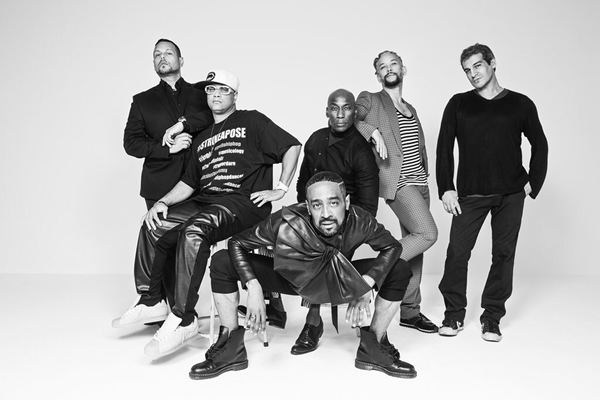
Madonna’s ‘Blond Ambition Tour’ dancers, made famous in the film ‘Truth or Dare,’ reunited for ‘Strike a Pose.’ Clockwise from left are Luis Camacho, Oliver Crumes, Carlton Wilborn, Kevin Stea, Jose Gutierez and Salim Gauwloos. (Photo by Robin De Puy)
WASHINGTON BLADE: Before we get to “Truth or Dare,” tell us a little about “Strike a Pose,” the reunion documentary you’re in with the other “Blond Ambition Tour” dancers. When will we get to see it in Washington?
GAUWLOOS: It’s a great movie, you’ll enjoy it. They’re working on a U.S. theatrical release early next year. Before everybody downloads it. You’ll see it soon. It’s a beautiful movie. They did a great job.
BLADE: But it has already been on the festival circuit, right?
GAUWLOOS: Yes. We mostly go out in twos, only in Berlin and Amsterdam they flew everybody over, but mostly just two of us to wherever. I went to Colombia, to Tel Aviv. It takes a lot of time always, but it’s fun. Almost like being on tour again.
BLADE: How did they pitch you on “Strike a Pose”?
GAUWLOOS: They approached me in 2013. I was doing a job, this big dance festival in Vienna and they contacted me. I said, “OK, I’ll meet with Reijer Zwaan,” one of the directors. He came to meet me in Vienna and we must have talked for about eight hours. It just felt right, I don’t know. I think the directors, Ester Gould and Reijer Zwaan, these directors from Holland, they’re amazing storytellers. I did kind of think, “Do I really want to throw myself out there again to be judged really in some kind of way, I want to be careful about that,” but I had a really good feeling about it.
BLADE: Did you talk to the other dancers before agreeing to it?
GAUWLOOS: No. I think the last one to jump on board was Jose (Gutierez). I felt it really should be all the dancers. Of course Gabriel (Trupin), he passed away a long time ago, but his mother represents him in the movie and that’s really beautiful. It wouldn’t have been the same without all the dancers so in the end, we all agreed and started shooting in 2014.
BLADE: Had you seen the other five any since the “Truth or Dare” premiere or kept in touch with them at all?
GAUWLOOS: No. For example, Carlton (Wilborn), Oliver (Crumes) and Kevin (Stea), I hadn’t seen for probably close to 25 years. Maybe 24 years. And Luis (Camacho) I’d seen a little bit here and there but that was probably like 12 years. Jose (Gutierez) and I both live in New York so I saw him a little bit here and there but with most of them, I’d had literally no contact at all. It was so amazing to see them all again after 25 years.
BLADE: What was different about this project?
GAUWLOOS: We’ve been approached so many times but in the end, it’s just mostly about Madonna but these guys really wanted to know what happened with us during the tour and what was happening with us right now, 25 years later, what we were up to, so that was really nice.
BLADE: You said recently that Reijer Zwaan was almost like your psychiatrist. How so?
GAUWLOOS: You probably know I was diagnosed in 1987 as being HIV-positive and I wanted to be out with that for a long time. It just felt silly to not be. So then along came Reijer and we talked for eight hours and it just all came out you know, crying and it was really the first time I sat with somebody I didn’t really know and told them, “Yes, I’ve been HIV for 29 years,” 27 at the time. I was like, “Oh my God, I feel like I’ve just been to a psychiatrist.” I’ve never been to a real one. Maybe I should (laughs).
BLADE: Madonna made a surprise appearance at a “Truth or Dare” anniversary screening a couple weeks ago in New York. What did it feel like when she walked in the room unannounced?
GAUWLOOS: It was surreal. We were just sitting there and we’re thinking, “OK, why isn’t the movie playing?” and boom, she walks in. It was like the whole room just gasped for air. You couldn’t believe it was real. She just sat down, watched the movie and left. But it was amazing.
BLADE: Had you seen her at all in the last 25 years?
GAUWLOOS: I hadn’t seen her in a long, long, long time. People on social media were like, “Oh my God, did she talk to you guys?” but we were in the front row and she was more in the back. Jose and I should have gone up to her but it wasn’t really the right moment. When she walked in it was just like, “Whoah, I’ve never felt that kind of energy in one room.” It was interesting watching the movie with her. It’s a good film. Very funny.
BLADE: How does it strike you seeing it now?
GAUWLOOS: I watched it a few years ago before we did “Strike a Pose.” When I see it I’m like, “Oh my God, my hair.” Me and my hair, it’s the only thing I can look at. I can’t stop flipping it, you know. It’s like I was so busy with my hair always. I’m just happy to have been part of such a big, iconic moment. If you look at the concert footage, it doesn’t look dated. The whole thing is just amazing. The least annoying thing for me is the kiss, the most important gay kiss in history. That I don’t have a problem watching but some of it I’m like, “Oh my God, no I did not just say that.” It’s like going back in time. It was a good experience.
BLADE: Wasn’t your hair sort of annoying at that length always falling in your face?
GAUWLOOS: Well when you dance, your hair flies around so it has more of an effect. I liked having longer hair and swinging it around.
BLADE: Speaking of hair, why did Madonna change her hair halfway through the tour? That ponytail look was so iconic for her but then she did the curls, which became kind of a trademark look too. It feels odd to me watching “Truth or Dare” because she’s always backstage and it’s supposed to make you feel like she’s walking out into the concert footage but it doesn’t match because she has the different hair.
GAUWLOOS: It was just like one day she had the ponytail and then she just went to the Shirley Temple curls. I don’t think there was any specific reason for it. With the ponytail sometimes it would fly around in your face so I think the curls were easier. Personally I liked the curls more.
BLADE: I’m sure you got wacked in the face with that ponytail a few times.
GAUWLOOS: Yeah and as a girl dancing with a ponytail, it’s like a delayed slap and it must have been difficult for her too.
BLADE: But it wasn’t that her hair was falling out from too much bleaching or pulling up or anything?
GAUWLOOS: No. She had strong hair.
BLADE: Do you feel she’s a bit aloof with you guys or do you think that’s just the way any major star would pretty much be?
GAUWLOOS: I don’t know. After 25 years, you know, it’s a long time. People go on with their life and deal with things in different ways. I mean I just knew sitting there she wasn’t going to run up to us and be like, “Oh my God,” you know? I knew that was not going to happen. It’s not really in her character to be like that. But who am I to judge? You know how you don’t see other people for many years and people react all different ways, so I don’t really judge that.
BLADE: Is it true (“Truth or Dare” director) Alek Keshishian said all the hundreds of hours of outtakes got accidentally deleted?
GAUWLOOS: Not deleted, but nobody knows where it is.
BLADE: I thought it was lame when the Blu-ray release came out a few years ago they didn’t put like 20 minutes or a half-hour of outtakes on it as bonus material. That would have been fun to see.
GAUWLOOS: Supposedly all these people claim not to know where it is. It’s lost.
BLADE: I’m sure it will surface maybe for the 50th anniversary or something.
GAUWLOOS: I know, right? Of course it will. It always does.
BLADE: Was there any dance move or routine that was especially tricky to learn for the tour?
GAUWLOOS: Well I had to learn to vogue, but it wasn’t particularly difficult. The only people who knew what that even was before were Luis, Jose and Madonna, who hired them. Being a classically trained dancer, it wasn’t really a challenge but it was one thing I had to learn. I think it came pretty naturally for everybody. The rest was just hard work. A lot of rehearsals. That’s how we got a really tight show together like that.
BLADE: Is it true you did like two weeks of twice-a-day run throughs before it premiered?
GAUWLOOS: Oh definitely. We were in the studio like 10-12 hours then at the end there were tech rehearsals at night too. It was a crazy, crazy schedule but you know, we were so young, talented and hungry so we didn’t care. We were all in it 100 percent.
BLADE: By the end, were you drenched in sweat and exhausted or were you in such great shape that you weren’t?
GAUWLOOS: People always think the numbers I was featured in like “Express Yourself” or the Dick Tracy part would be the most exhausting but those were the ones you could enjoy more. The most exhausting number to do was “Like a Prayer” because we had this whole big number while she’s changing for the next number. That you were like, “OK, now I can’t breathe.” (laughs)
BLADE: Do you have any mementos from the tour? Any costumes or anything?
GAUWLOOS: I did but I lost all of them, just having moved so many times. When we started shooting “Strike a Pose,” they were like, “Show us some pictures” and I was like, “I don’t have anything.” It’s kind of sad. Only in my head.
BLADE: So you don’t have the rosary Madonna gave you?
GAUWLOOS: No, I definitely don’t have it. I should just buy one and say it’s the one she gave me. (laughs)
BLADE: Some of the choreography was so gay but you were kind of the straight hunk too in some passages. Did that strike you as ironic?
GAUWLOOS: No, it’s like being an actor. Some passages I was acting as a straight dance partner for Madonna so I was acting straight. Not every dancer could do it. But it mostly came natural and from just doing it over and over.
BLADE: Did you bulk up for the tour or were you always kind of built like that?
GAUWLOOS: Starting out in Antwerp, Belgium as a dancer I was really skinny. Then I came to America, I got a little bit bigger. For the tour we were supposed to go to the gym but of course we never went. It was just the cruel rehearsal schedule that kind of got everybody in shape. It’s like 10 hours of dancing, how can you not be in shape from that? That’s how I got bigger and more muscular. I definitely didn’t look like that when we started, definitely not.
BLADE: Did you see “I’m Going to Tell You a Secret,” the “Truth or Dare” sequel?
GAUWLOOS: I saw a little part of it, not the whole thing. I heard the dancers did not get as much of a part. No kissing, in other words. Not X-rated. (laughs)
BLADE: Did you grow up Catholic?
GAUWLOOS: No, not really. My mom would say she was Catholic but we never went to church. It was just kind of like, “Well, we walk by the church.” But definitely not. My father was Muslim. I’m half Moroccan. He was from Morocco but he passed away and was only in my life a couple years and then he disappeared. I’m a little bit of everything but I don’t go to church or practice.
BLADE: So did all the religious imagery in the show resonate with you at all?
GAUWLOOS: No, it was more of a theatrical thing for me with the crosses and the lights. I never felt like, “Oh my God, this is sacrilegious” or anything. I just saw it as a show. I was probably the least knowledgeable about how controversial and taboo it was for the time.
BLADE: The “Vogue” VMA performance with the Marie Antoinette costumes, was that after the tour?
GAUWLOOS: Yes. That was nice because we were all sad when the tour ended but we knew we’d be going back in a few weeks to do that and we’d get to see each other and dance together again. We worked like a week and a half or two weeks getting ready for that just with the costumes and the girls had the fans and everything and just to make sure it was really tight. I think it was like a month or two months after the tour finished.
BLADE: Carlton was on “The Girlie Show,” Madonna’s next tour. What were you doing by ’93 and was there any discussion or possibility of any of the rest of you touring with Madonna again?
GAUWLOOS: No. The ride was over after everything was done with Madonna and I realized I had my own reality to deal with being HIV. I was just going through life really. I really partied so I didn’t have to deal with being HIV and it was like a really dark period for me for like six-seven years.
BLADE: How did you get through it?
GAUWLOOS: When I really got my shit together was in 2000. I met my husband and fell in love, that was it. That changed my whole life around. But before that, I’d been diagnosed in 1987 and then I ended up in the hospital in 1997 with a really bad pneumonia. I didn’t do any treatment for 10 years, I just couldn’t deal with it. So I ended up in the hospital and that was really a reality check and a wakeup call. I don’t know, this is awfully personal, but I also had some issues with my working papers too. I was HIV-positive so I didn’t want to go to the hospital and get deported. That’s one of the reasons I never went. That’s also why coming out with my story, I’m sure there are a lot of people in my situation. They’re HIV and illegal aliens and afraid to get help. I ended up in the hospital almost dead before I realized there are so many organizations out there that can help you get free medication and they don’t deport you and all that stuff.
BLADE: Tell me about your husband.
GAUWLOOS: He got my heart, you know? His name is Facundo Gabba. He’s from Argentina. He just came into my life and blew me away. When I was diagnosed it was still the ‘80s and people were dropping like flies. You can’t imagine what it was like to have some guy come in and telling you this with your mother sitting there. They said, “You have the HIV virus and you’ve probably got about five years.” So the first thing was like, “Oh my God, I’m 18, what did I do wrong?” It was a really dark, dark, dark thing. Thank God the whole Madonna experience happened because I needed something to hold onto. … You think, “Who’s going to love me?,” but you can be HIV and find love. That was the biggest thing for me to learn.
BLADE: What do you do now?
GAUWLOOS: I teach at Broadway Dance Center, a very nice school here in New York City, on a regular basis. I also do fashion shoots. When they approached me for “Strike a Pose” in 2013, I had just finished working on Longchamp. I did that for two seasons so mostly teaching but also doing a lot of fashion productions.
BLADE: Did you go to Gabriel’s funeral?
GAUWLOOS: No. I didn’t know right away that he’d died. But since “Strike a Pose,” I’ve been in contact with his mother, Sue, who is really nice. It’s almost like being in touch with Gabriel. She’s such a sweet woman. We talk and it’s been a great experience going to her house in San Francisco. I get to find out more about Gabriel. It’s really beautiful.
BLADE: Have you followed Madonna’s career? Did you ever go see her other tours?
GAUWLOOS: I never went to her shows, but I’d watch her on YouTube here and there if she had new stuff. I liked “The Girlie Show” and I thought “The Confessions Tour” where she came out of the disco ball and had all the Steven Klein stuff with the horses and everything was beautiful.
BLADE: You have to get tired of being asked about Madonna, no?
GAUWLOOS: Yeah, it gets a little tiring here and there but at the same time, it’s OK. Especially with this new movie, they do ask Madonna questions but there are also questions related to us, so it’s really nice. I’m happy it happened. Especially now, we’re all in the spotlight again so it’s OK. I’ll take that with it. I don’t mind.
BLADE: You said once you were also really into Janet Jackson back in the early ‘90s too, right?
GAUWLOOS: I was really into Janet Jackson and also Paula Abdul a lot, too. I know a lot of people didn’t really like Paula Abdul, but I liked her because here was another singer giving a lot of dancers work and it was real dance. You had to be a real dancer. So I think that’s where that comes from. Did I like their music more than Madonna’s? No, I don’t think so, but I liked the whole moving thing, the whole “Rhythm Nation” thing, I was into that too.
BLADE: One thing that came up when Oliver, Kevin and Gabriel sued Madonna over “Truth or Dare” was a claim that they didn’t know it was going to be made into this big thing and so on. But you guys saw Alek and his team around constantly. Wasn’t that claim somewhat naive?
GAUWLOOS: Yeah, yeah, yeah. I don’t know what all they sued for. They all sued for different things. What wasn’t clear was that we were not going to make any money from “Truth or Dare” and we didn’t. At the end of the day, that’s what it came down to. To this day, we’ve never made a penny from “Truth or Dare.” I’m not saying that to be shady or mean, it’s just a fact. Did I sue? No, no. If it’s that important to somebody, I don’t know. I’m just not a suing person I think, especially for something like that.
BLADE: Did they ask you if you wanted to be part of it?
GAUWLOOS: No, no, no. That last time I saw them was in L.A. I saw them on some talk shows talking about the lawsuit but we all knew they were taping. I just think we didn’t know we weren’t going to make any money, which would have been nice. A lot of us could have used the money.
BLADE: Niki (Haris) and Donna (DeLory) toured with Madonna a lot in subsequent years but with a few exceptions, she mostly gets all new dancers for each tour. Why do you think that is?
GAUWLOOS: Probably just so she always had a new look, a fresh look, you know? I think with backup singers, Niki and Donna were the perfect backup singers for Madonna. They could move, they could sing, they looked nice, they had all the qualities. It’s probably a lot harder to find all that, so they were like a perfect match. With the dancers, I just think it’s her thing. Aside from Carlton and maybe a few others, it’s just like her schtick to hire new dancers each tour.
BLADE: Have you ever met any of her other dancers? Any of them ever come up and say hi?
GAUWLOOS: No. I won’t speak to dancers of other tours. No, I’m joking. (laughs)
BLADE: Aside from your work with Madonna, what are you most proud of?
GAUWLOOS: Ugh, that’s a tough question. I don’t know. I think the most proud thing would be being a dancer and still to this day, always having a voice and not really changing my belief system of dancing and everything. As an artist, I’ve always believed in myself. I may ask other people for advice, but at the end of the day, I’ve always listened to myself first.
a&e features
Looking back at the 10 biggest A&E stories of 2025
‘Wicked,’ Lady Gaga’s new era, ‘Sexy’ Bailey and more

Although 2025 was a year marked by countless attacks on trans rights and political setbacks, the year also saw brilliant queer artists continuing to create art. From Cannes and Sundance Award winners now vying for Oscar consideration to pop icons entering new stages of their careers, queer people persevered to tell their stories through different media.
With the state of the world so uncertain, perhaps there’s no more vital time to celebrate our wins, as seen through some of this year’s top pop culture moments. While there’s no collection of 10 stories that fully encompass “the most important” news, here are some events that got the gays going:
10. ‘Mysterious Gaze of the Flamingo’ wins big at Cannes

The Cannes Film Festival has become a crucial start for films hoping to make their way to the Oscars, and first-time director Diego Céspedes won the top Un Certain Regard prize for his intimate western “The Mysterious Gaze of the Flamingo.” The film is set in the ‘80s and is intended as an allegory for the AIDS epidemic. Seeing a film that unpacks vital queer history win one of the most coveted awards at Cannes has been a huge point of pride in the independent filmmaking community.
Since the film bowed at Cannes, it has been selected as Chile’s Oscar entry in the Best International Feature race. Speaking with The Blade during the film’s AFI Fest run in October, Céspedes said: At first, I was kind of scared to have this campaign position in the times that we’re living [in] here. But at the same time, I think the Oscars mean a huge platform — a huge platform for art and politics.”
9. ‘The Last of Us’ returns for an even gayer season 2
While the first season of The Last of Us gave us one of TV’s most heartbreaking queer love stories in the episode “Long, Long Time,” Season 2 doubled down on its commitment to queer storytelling with the blossoming relationship between Ellie (Bella Ramsey) and Dina (Isabela Merced). The show expanded on the pair’s relationship in the original video game, making it perhaps the central dynamic to the entire season. That unfortunately came with more homophobic backlash on the internet, but those who checked out all the episodes saw a tender relationship form amid the show’s post-apocalyptic, often violent backdrop. For their performance, Ramsey was once again nominated for an Emmy, but Merced deserved just as much awards attention.
8. ‘Emilia Pérez’ sparks controversy
Jacques Audiard’s genre-bending trans musical “Emilia Pérez” proved to be an awards season juggernaut this time last year, winning the Golden Globe for Best Musical/Comedy. But when the lead star Karla Sofia Gascón’s racist, sexist, and homophobic old tweets resurfaced, the film’s Oscar campaign became a tough sell, especially after Netflix had tried so hard to sell Emilia Pérez as the “progressive” film to vote for. Mind you, the film had already received significant backlash from LGBTQ+ audiences and the Mexican community for its stereotypical and reductive portrayals, but the Gascón controversy made what was originally just social media backlash impossible to ignore. The only person who seemed to come out of the whole debacle unscathed was Zoe Saldaña, who won the Oscar for Best Supporting Actress over Ariana Grande.
7. ‘Sorry, Baby’ establishes Eva Victor as major talent
Back in January at the Sundance Film Festival, Eva Victor (known by many for her brand of sketch comedy) premiered their directorial debut “Sorry, Baby” to rave reviews, even winning the Waldo Salt Screening Award. Victor shadowed Jane Schoenbrun on the set of “I Saw the TV Glow,” and seeing Victor come into their own and establish such a strong voice immediately made them one of independent cinema’s most exciting new voices. A memorable scene in the film sees the main character, Agnes (played by Victor), struggling to check a box for male or female, just one example of how naturally queerness is woven into the fabric of the story.
Most recently, Victor was nominated for a Golden Globe for her performance in the film, and she’s represented in a category alongside Jennifer Lawrence (“Die My Love”), Jessie Buckley (“Hamnet”), Julia Roberts (“After the Hunt”), Renate Reinsve (“Sentimental Value”) and Tessa Thompson (“Hedda”). The film also received four Independent Spirit Award nominations overall.
6. Paul Reubens comes out in posthumous doc

While Paul Reubens never publicly came out as gay before passing away in 2023, the two-part documentary “Pee-wee as Himself” premiered back in May on HBO Max, giving the legendary comedian a chance to posthumously open up to the world. Directed by Matt Wolf, the documentary explores how Reubens found his alter ego Pee-Wee Herman and why he kept his private life private.
The documentary won an Emmy in the Outstanding Documentary or Nonfiction Special category and remains one of the most critically acclaimed titles of the year with a 100% Rotten Tomatoes score. Also worth noting, the National Geographic documentary Sally told the posthumous coming out story of Sally Ride through the help of her long-time partner, Tam O’Shaughnessy.
5. Lady Gaga releases ‘Mayhem’
Lady Gaga entered a new phase of her musical career with the release of Mayhem, her seventh album to date. From the frenzy-inducing pop hit Abracadabra to the memorable Bruno Mars duet featured on “Die With a Smile,” seeing Gaga return to her roots and make an album for the most die-hard of fans was especially rewarding after the underwhelming film releases of “House of Gucci” and “Joker: Folie à Deux.” Gaga has been touring with The Mayhem Ball since July, her first arena tour since 2018. She even extended her tour into 2026 with more North American dates, so the party isn’t stopping anytime soon. And Gaga is even set to make an appearance next May in “The Devil Wears Prada 2.”
4. Cynthia Erivo, Ariana Grande perform at the Oscars

While “Wicked: For Good” didn’t quite reach the heights of the first film, we will forever have Cynthia Erivo and Ariana Grande’s breathtaking live performance that opened the 97th Academy Awards. The pair sang a rendition of “Over the Rainbow,” “Home,” and “Defying Gravity,” paying proper homage to the original 1939 “Wizard of Oz.” Even non-Wicked fans can’t deny how magical and brilliantly staged this performance was. With both Erivo and Grande up for acting Oscars last year, they’re hoping to repeat success and make history with consecutive nominations. Either way, let’s hope there’s another live performance in the making, especially with two new original songs (The Girl in the Bubble and No Place Like Home) in the mix.
3. Indya Moore speaks out against Ryan Murphy
Indya Moore has consistently used social media as a platform for activism, and in September, posted a 30-minute Instagram live speaking out against “Pose” co-creator Ryan Murphy. Moore claimed that Murphy wasn’t being a true activist for trans people. “Ryan Murphy, we need you to do more. You need to address the racism, the violence, and the targeting of people on your productions, Ryan Murphy. You do need to make sure trans people are paid equally. Yes, Janet did the right thing,” Moore said. Murphy was also back in the headlines this year for the critically panned “All’s Fair” and the controversial “Monster: The Ed Gein Story” starring Laurie Metcalf and Charlie Hunnam.
2. Cole Escola wins Tony for Best Leading Actor
Few pop culture moments this year brought us together more than Cole Escola winning a Tony award for “Oh, Mary!” the Broadway show they created, wrote and starred in (we love a triple threat!) Escola made history by becoming the first nonbinary person to win a Tony in the leading actor category, and seeing them excitedly rush to the stage wearing a Bernadette Peters-inspired gown instantly became a viral social media moment.
The cherry on top of Escola’s major moment is the recent news that they are writing a Miss Piggy movie with Jennifer Lawrence and Emma Stone producing — news that also broke the internet for the better. We cannot wait!
1. Jonathan Bailey makes gay history as ‘Sexiest Man Alive’

The same year as his on-screen roles in blockbusters “Jurassic World Rebirth” and “Wicked: For Good,” Jonathan Bailey made history as the first openly gay man to be named People magazine’s “Sexiest Man Alive.” The fact that it took 40 years for an openly gay man to earn the title is a signifier of how far we still have to go with queer representation, and seeing Bailey celebrated is just one small step in the right direction.
“There’s so many people that want to do brilliant stuff who feel like they can’t,” he told PEOPLE, “and I know the LGBT sector is under immense threat at the moment. So it’s been amazing to meet people who have the expertise and see potential that I could have only dreamed of.” In 2024, Bailey founded the charity titled The Shameless Fund, which raises money for LGBTQ+ organizations.
a&e features
Your guide to D.C.’s queer New Year’s Eve parties
Ring in 2026 with drag, leather, Champagne, and more
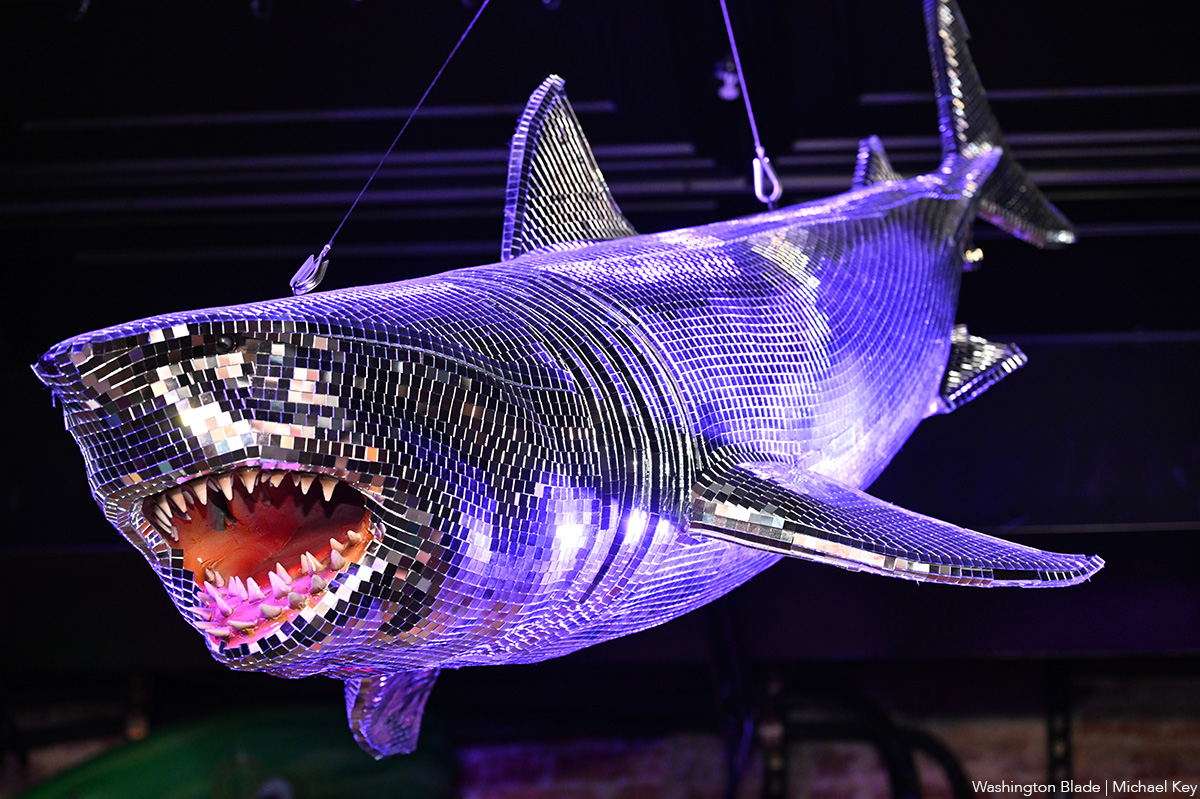
With Christmas in the rear view mirror, we can turn our attention to ringing in a much-anticipated New Year with a slew of local LGBTQ parties. Here’s what’s on tap.
Pitchers
This spacious Adams Morgan bar is hosting the “Pitchers’ Perfect New Year’s Eve.” There will be a midnight Champagne toast, the ball drop on the big screens, and no cover, all night long. The bar doesn’t close until 4 a.m., and the kitchen will be open late (though not until close). All five floors will be open for the party, and party favors are promised.
Trade
D.C.’s hottest bar/club combo is leaning into the Shark motif with its NYE party, “Feeding Frenzy.” The party is a “glitterati-infused Naughty-cal New Year’s Even in the Shark Tank, where the boats are churning and the sharks are circling.” Trade also boasts no cover charge, with doors opening at 5 p.m. and the aforementioned Shark Tank opening at 9 p.m.. Four DJs will be spread across the two spaces; midnight hostess is played by Vagenesis and the two sea sirens sensuously calling are Anathema and Justin Williams.
Number Nine
While Trade will have two DJs as part of one party, Number Nine will host two separate parties, one on each floor. The first floor is classic Number Nine, a more casual-style event with the countdown on TVs and a Champagne midnight toast. There will be no cover and doors open at 5 p.m. Upstairs will be hosted by Capital Sapphics for its second annual NYE gathering. Tickets (about $50) include a midnight Champagne toast, curated drink menu, sapphic DJ set by Rijak, and tarot readings by Yooji.
Crush
Crush will kick off NYE with a free drag bingo at 8 p.m. for the early birds. Post-bingo, there will be a cover for the rest of the evening, featuring two DJs. The cover ($20 limited pre-sale that includes line skip until 11 p.m.; $25 at the door after 9 p.m.) includes one free N/A or Crush, a Champagne toast, and party favors (“the legal kind”). More details on Eventbrite.
Bunker
This subterranean lair is hosting a NYE party entitled “Frosted & Fur: Aspen After Dark New Year’s Eve Celebration.” Arriety from Rupaul Season 15 is set to host, with International DJ Alex Lo. Doors open at 9 p.m. and close at 3 p.m.; there is a midnight Champagne toast. Cover is $25, plus an optional $99 all-you-can-drink package.
District Eagle
This leather-focused bar is hosting “Bulge” for its NYE party. Each District Eagle floor will have its own music and vibe. Doors run from 7 p.m.-3 a.m. and cover is $15. There will be a Champagne toast at midnight, as well as drink specials during the event.
Kiki, Shakiki
Kiki and its new sister bar program Shakiki (in the old Shakers space) will have the same type of party on New Year’s Eve. Both bars open their doors at 5 p.m. and stay open until closing time. Both will offer a Champagne toast at midnight. At Kiki, DJ Vodkatrina will play; at Shakiki, it’ll be DJ Alex Love. Kiki keeps the party going on New Year’s Day, opening at 2 p.m., to celebrate Kiki’s fourth anniversary. There will be a drag show at 6 p.m. and an early 2000s dance party 4-8 p.m.
Spark
This bar and its new menu of alcoholic and twin N/A drinks will host a NYE party with music by DJ Emerald Fox. Given this menu, there will be a complimentary toast at midnight, guests can choose either sparkling wine with or without alcohol. No cover, but Spark is also offering optional wristbands at the door for $35 open bar 11 p.m.-1 a.m. (mid-shelf liquor & all NA drinks).
a&e features
Local, last-minute holiday gift ideas
Celebrate the season while supporting area businesses
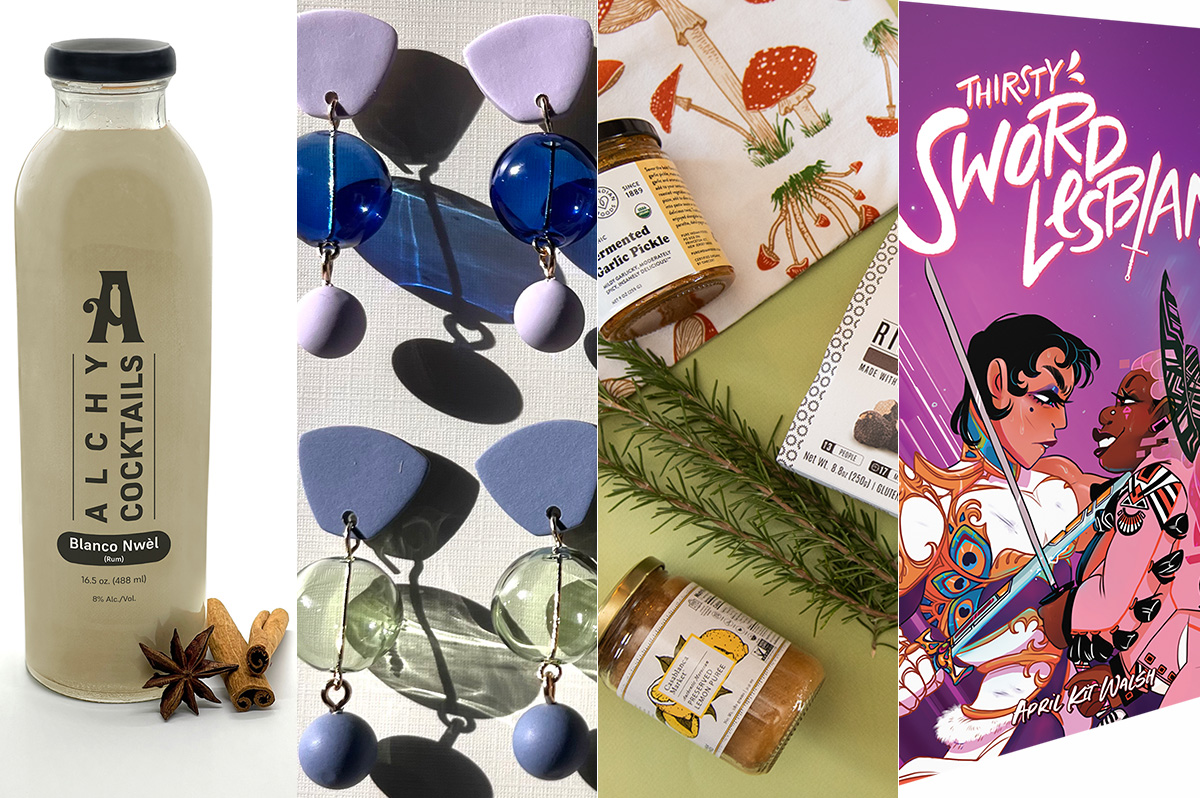
The DowntownDC Holiday Market is bustling. Union Station is decked out with its annual Christmas tree. Washingtonians have wrapped their houses and apartment balconies with festive lights and holiday decorations. The holiday season is here. And with stockings to fill and empty space under the tree, Washington’s local shops and artists have plenty to offer.
Show your LGBTQ and D.C. pride with the Washington Blade’s annual holiday gift guide.
To embrace the holiday buzz: The Blanco Nwèl cocktail from Alchy Cocktails. This Caribbean eggnog is one of Alchy Cocktail’s seasonal holiday cocktails. The flavor profile is similar to coquito, a traditional Puerto Rican Christmas drink with a coconut base. As a queer and Caribbean-owned business, Alchy Cocktails has been based out of Washington since 2021. Blanco Nwèl is available in both cocktail ($24) and mocktail ($12) online and at a variety of holiday markets, including the Tingey Plaza Holiday Market, the Flea Market at Eastern Market, Union Station’s Main Hall Holiday Market, and more. ($24)
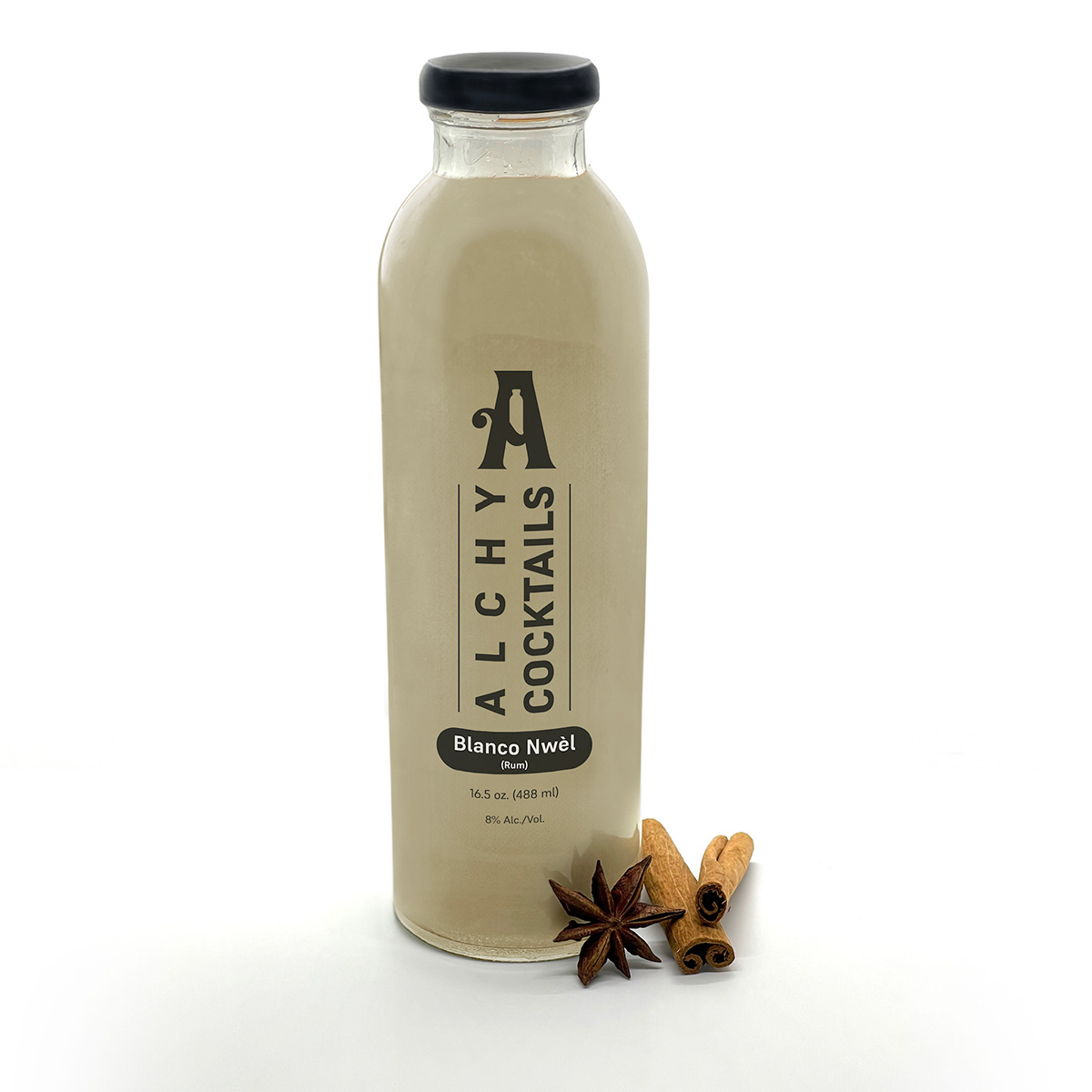
A spicy bite: Gordy’s Cajun Okra from Salt and Sundry. These spicy, tangy pickles pull on Southern Cajun-style flavors, packing a punch with paprika, cayenne, and more. Gordy’s is an LGBTQ-owned and Washington-based brand, making this gift an opportunity to support a local LGBTQ business straight from the jar. This pantry staple is available on Salt & Sundry’s website and at its locations in Union Market, Logan Circle, and its Georgetown holiday pop-up store. ($14)
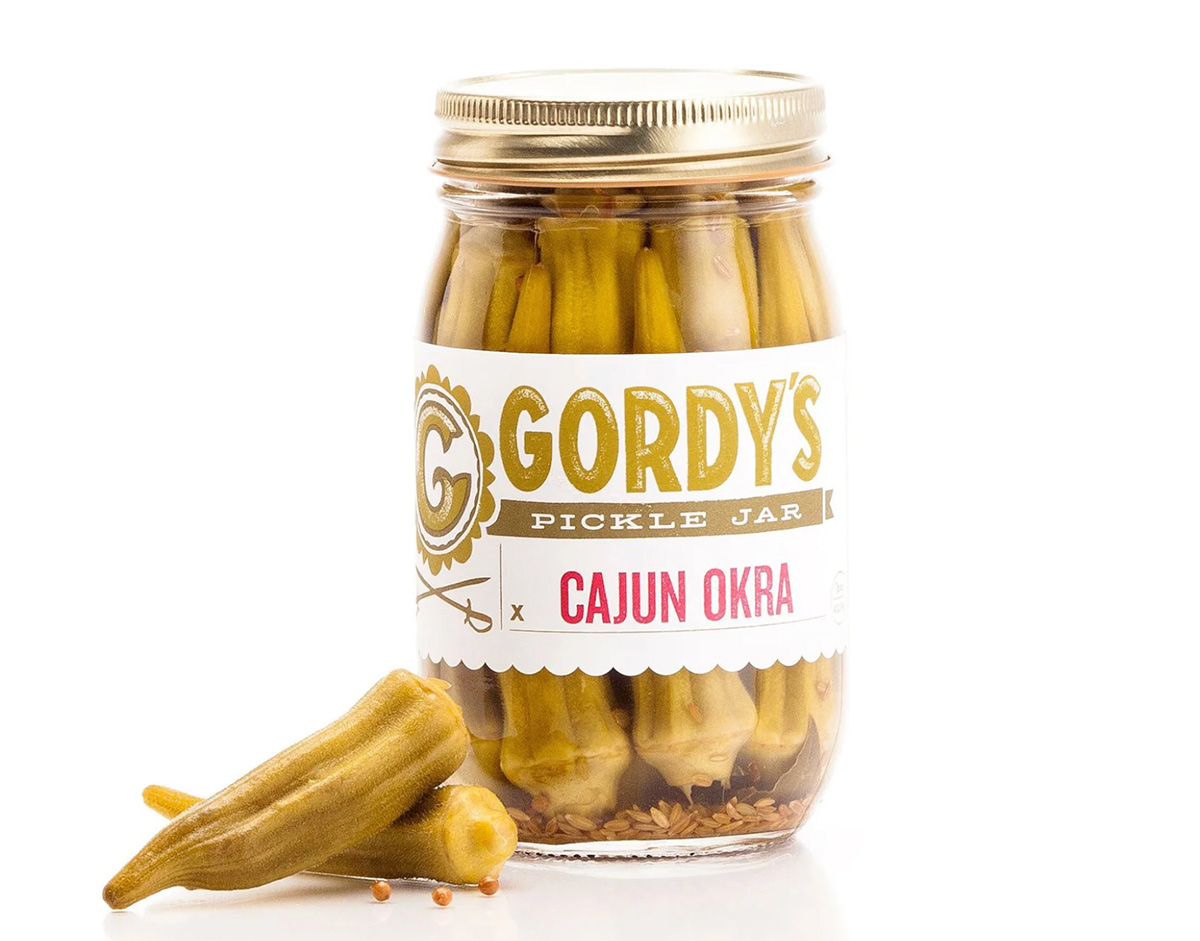

To celebrate Washington pride: The DC Landmark Tote Bag from The Neighborgoods. Native Washingtonians, visitors, friends and family alike will find something to love about this Washington-themed tote bag. Food trucks, the 9:30 Club, the Metro logo and pandas from the National Zoo are just some of the city’s landmarks depicted across the tote in a red, white, and blue color palette. The tote is a part of the DC Landmarks collection, which donates 10 percent of its sales to the American Civil Liberties Union. The Neighborgoods itself is a local, woman-owned business built out of a passion for screen-printing in 2013. The 100 percent cotton canvas tote is for sale online or at the DowntownDC Holiday Market. ($22)
To give friends and family their flowers: The Flowers Bandana from All Very Goods. This 100 percent cotton bandana was designed in Washington and hand printed in India. Its uniqueness comes in being covered with the faces of Black women, representing a “love letter to all women but especially Black women,” according to All Very Goods. The Black woman-owned and operated business, based out of Northwest Washington, has a mission to celebrate diversity and representation through its products. The bandana intends to give Black women their “flowers.” The Flowers bandana is available for purchase online. ($24)
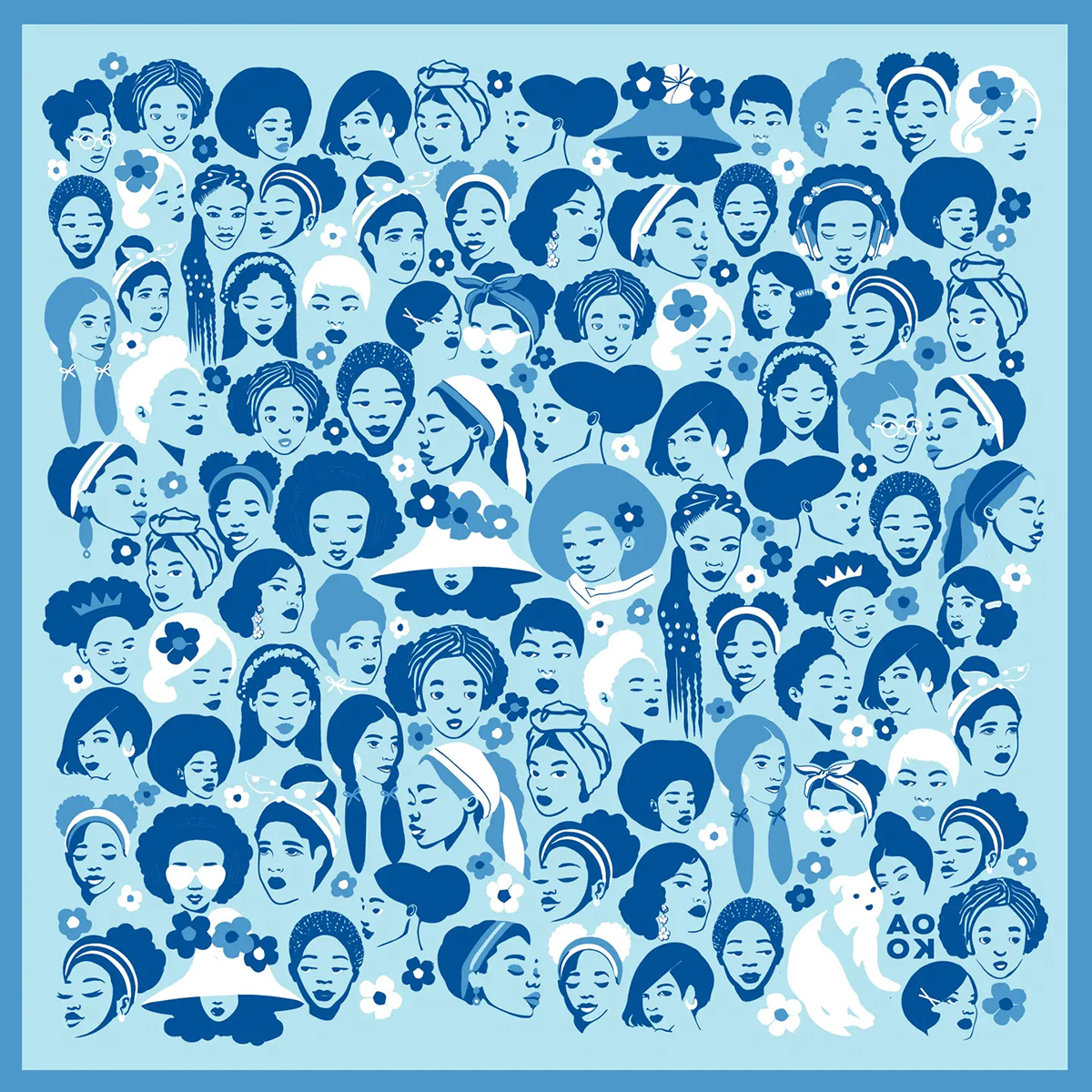
To unlock culinary creativity: The Curious Chef Gift Collection from Each Peach Market. This customizable collection of kitchen oddities — ranging from tinned fish to chili oil — is a quirky gift for the most inventive chefs. The collection is available in a Standard Santa, Extra Goodies and Super Holiday Size for up to $165. The Washington-based market, founded in 2013, permits customers to make the collection special by specifying what unique ingredients are packaged, including products made by local or LGBTQ brands. Each Peach Market offers assembly and pick up in-person at its Mount Pleasant shop and also offers local delivery and nationwide shipping via its website. ($85)
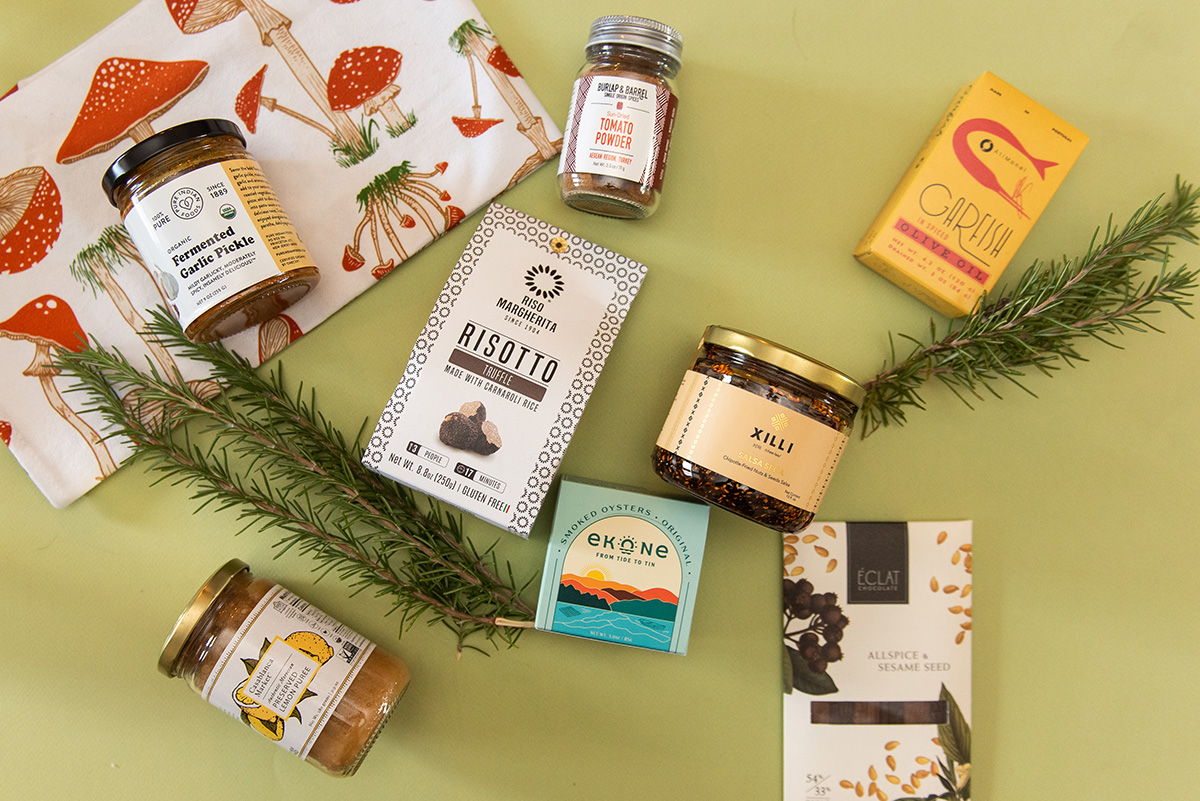
To give a touch of sweetness: The DC Landmark Chocolate Covered Oreo Holiday Cookies from Capital Candy Jar. Wrapped in a festive red bow, this box of nine cookies embraces love for Washington and the holiday season in one. Among the dark and milk chocolate covered cookies are images of the U.S. Capitol, the White House, the Lincoln Memorial, the Jefferson Memorial and festive hollies. The treat, packaged in a Hill East facility just a few blocks from the Capitol, is available for purchase online and at the DowntownDC Holiday Market. ($23.95)

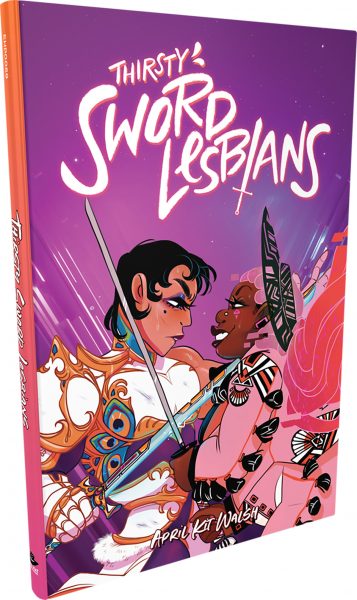
To celebrate queer gaming: Thirsty Sword Lesbians from Labyrinth Games & Puzzles. This roleplaying game embraces lesbian culture by unlocking a world of swords, romance, and battle. Ideal for group settings, the book presents a system of world building and character identities that are best brought to life by creative minds. Labyrinth, which has been a local Washington business for more than 15 years, celebrates non-digital fun through games and puzzles that connect the community. This gift is offered online and at Labyrinth’s Capitol Hill location. ($29.99)
To make a bold statement: The “Resist” T-shirt from Propper Topper. This locally screen-printed black tee features the Washington flag designed within a raised fist, symbolizing both Washington pride, and political resistance. The shirt is made exclusively by Propper Topper, a local Washington business that evolved from a hat shop to a gift store since opening in 1990. The tri-blend unisex shirt is available both for pickup at Propper Topper’s Cathedral Heights location and shipping via the online site. ($32)
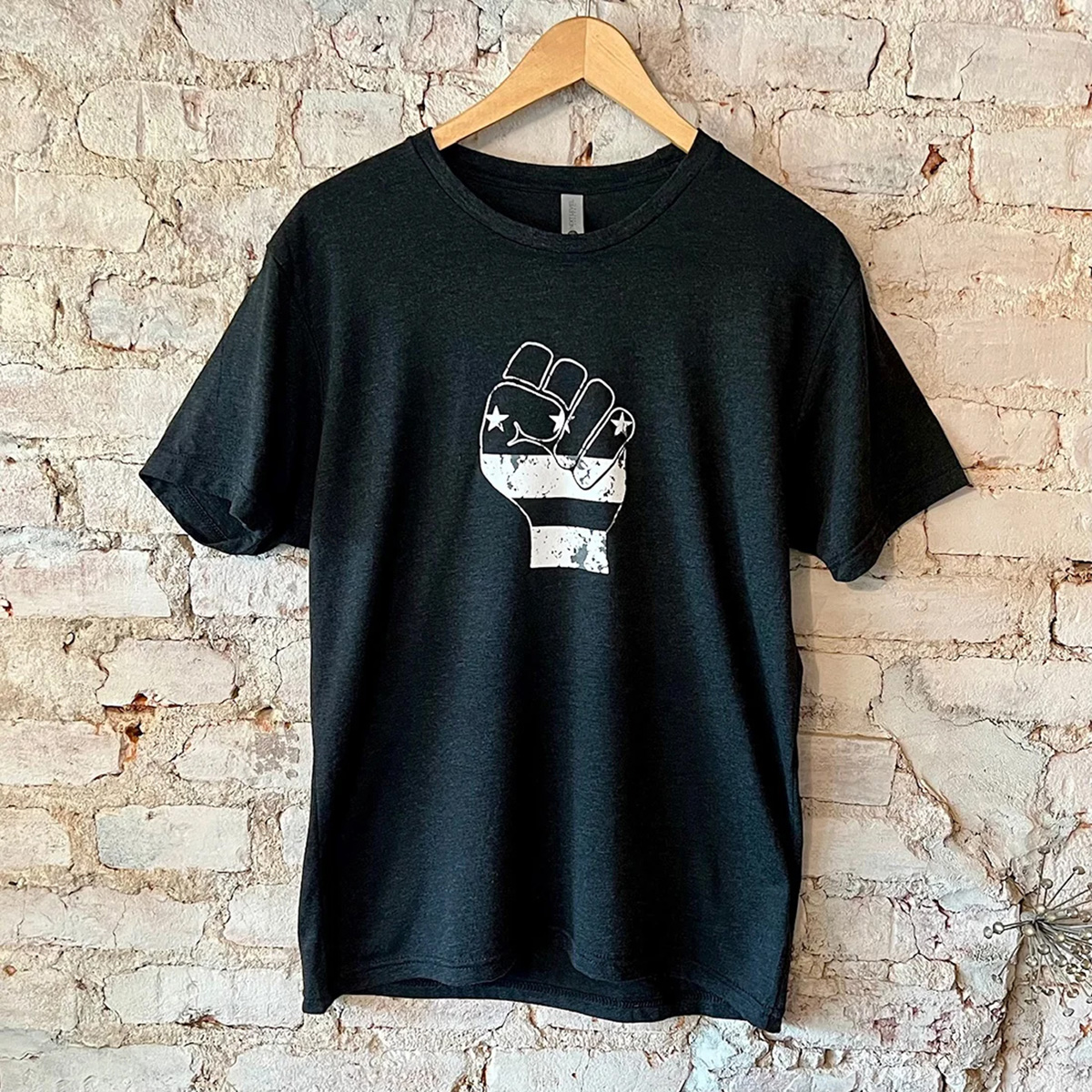
To keep it c(g)lassy: The Glass Ball earrings from Blue Moon Aquarius. Gifting can rarely go wrong when it comes to a new pair of earrings. The unique statement earrings — made of polymer clay, glass, and 18k gold plating over surgical steel — are hand cut, sanded and assembled in Washington, meaning each set is unique. Blue Moon Aquarius, a local brand, is known for its small batch jewelry and home decor designed with clay materials. Available in oxblood, hunter green, lavender, and bluestone color palettes, these earrings are available for purchase on Blue Moon Aquarius’ website and at the DowntownDC Holiday Market. ($48)
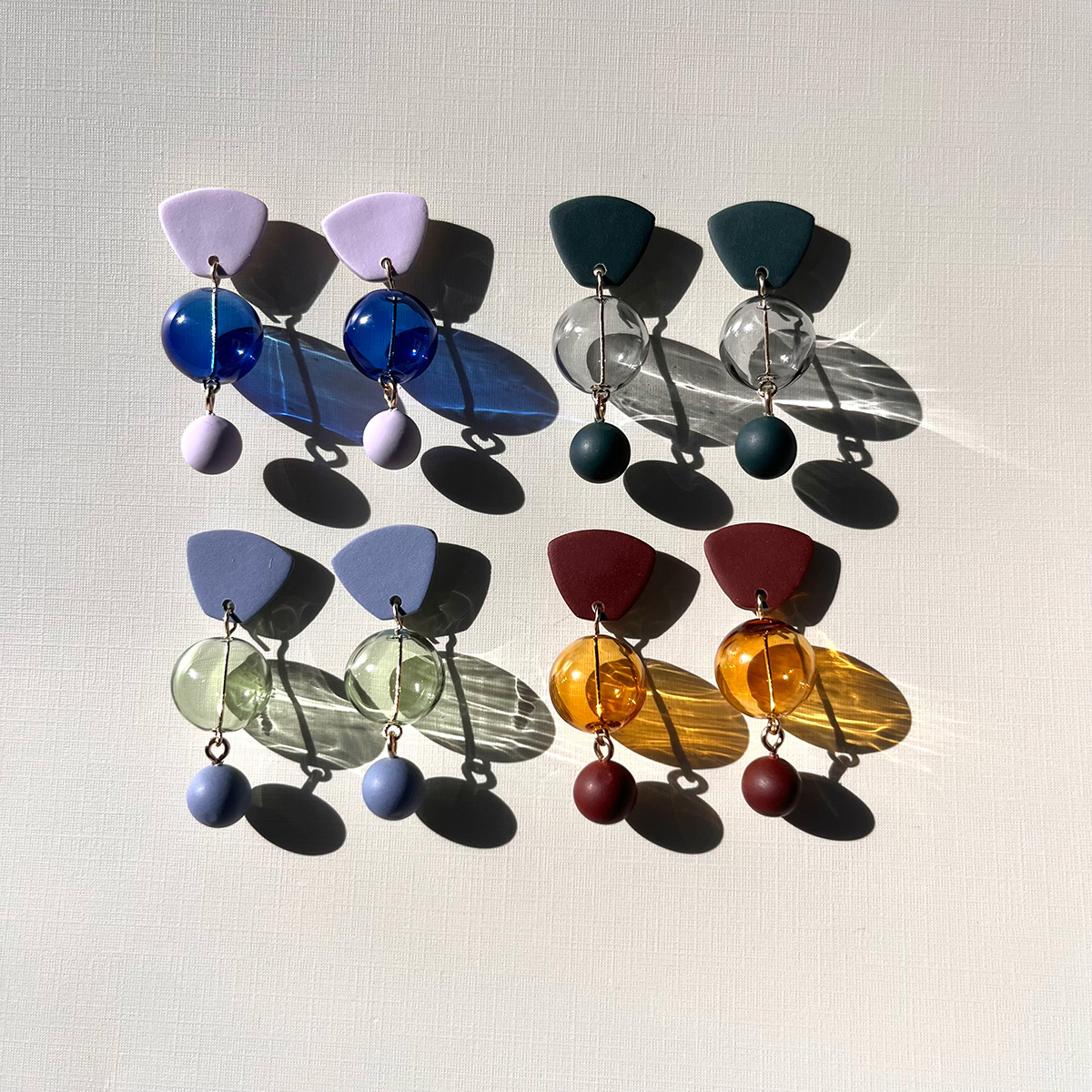
To elevate a holiday tea or charcuterie party: The Honey Flight: Tea Lover’s Selection from BannerBee. This local honey company presents the ideal gift to make cozying up with a cup of tea slightly more special. The Honey Flight contains three types of raw wildflower honey infused with fair trade Ugandan vanilla bean, chai spices, and locally sourced lemon thyme herb. The gift is also an opportunity to uplift a family company based in the Mid-Atlantic that offers all-natural, sustainable products. The flight is available online, at the DowntownDC Holiday Market or at the Arlington Courthouse and Dupont Farmers’ Markets. ($36)
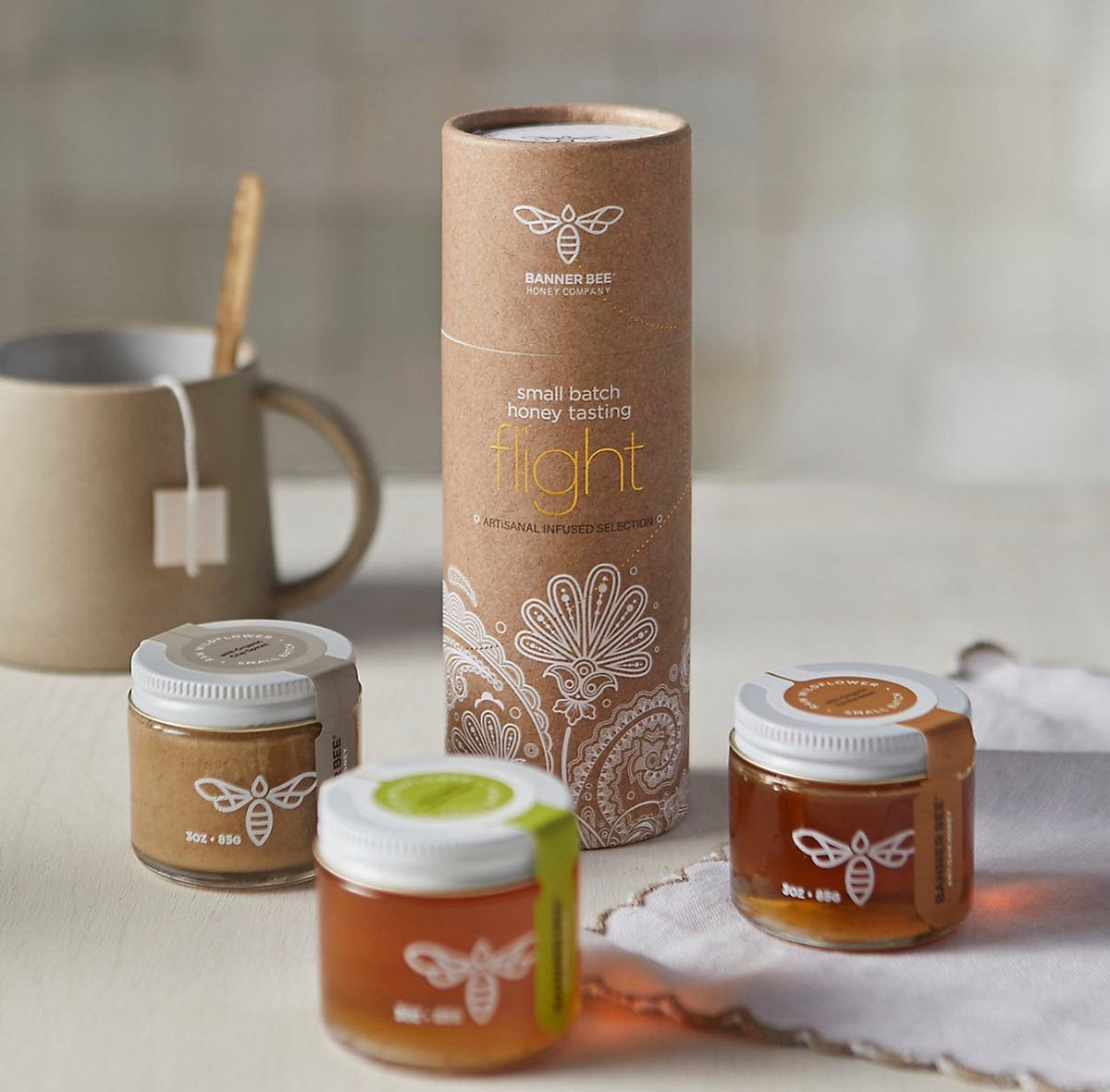
For Baltimore shoppers: If you’re in Charm City, don’t miss Balston Mercantile, opened by a gay couple in June. Their gorgeous shop in the Hampden neighborhood offers an array of unique, upscale finds, from barware and artwork to cookbooks and home decor and more. (849 W. 36th St.)

